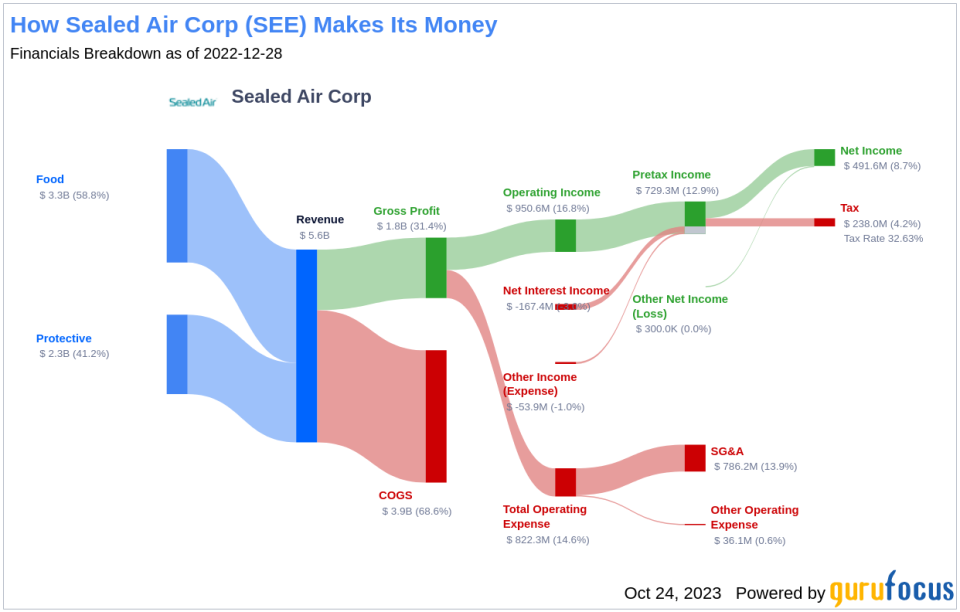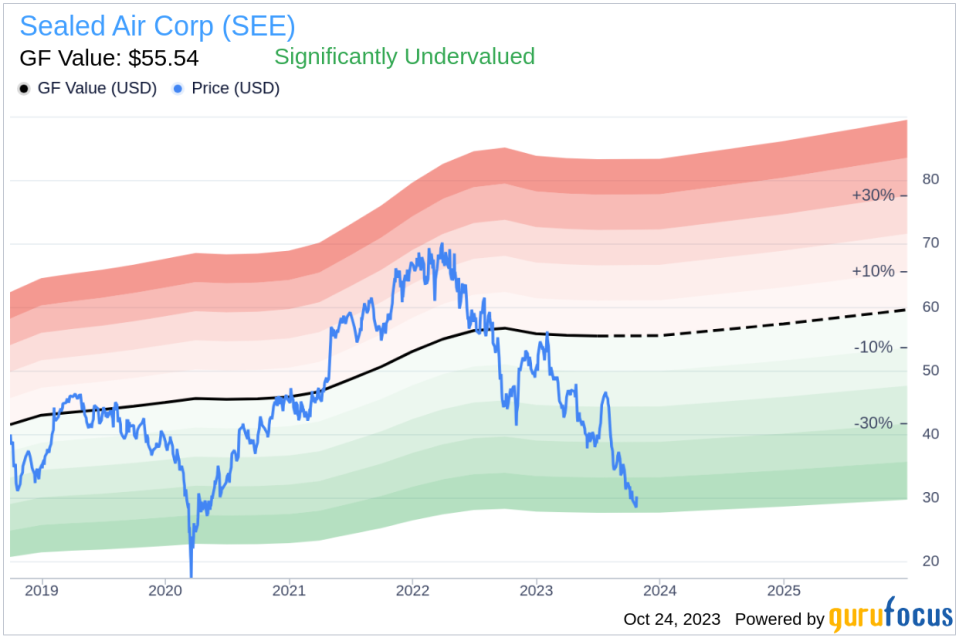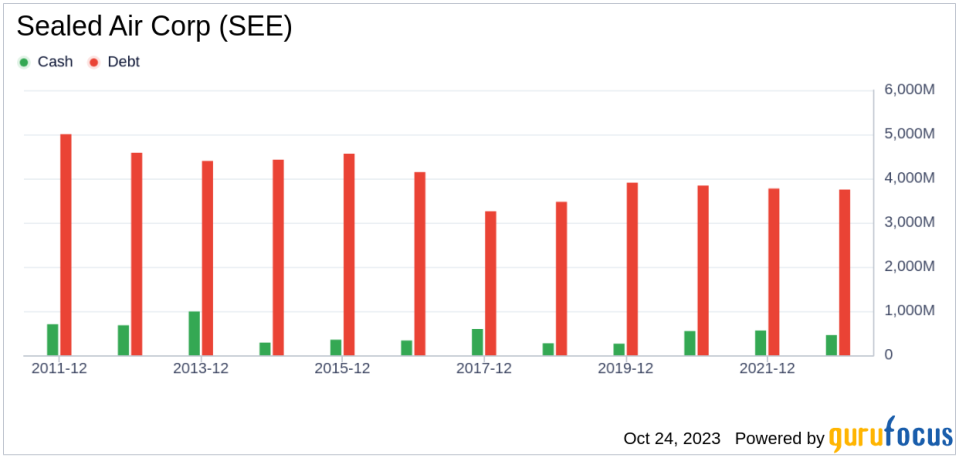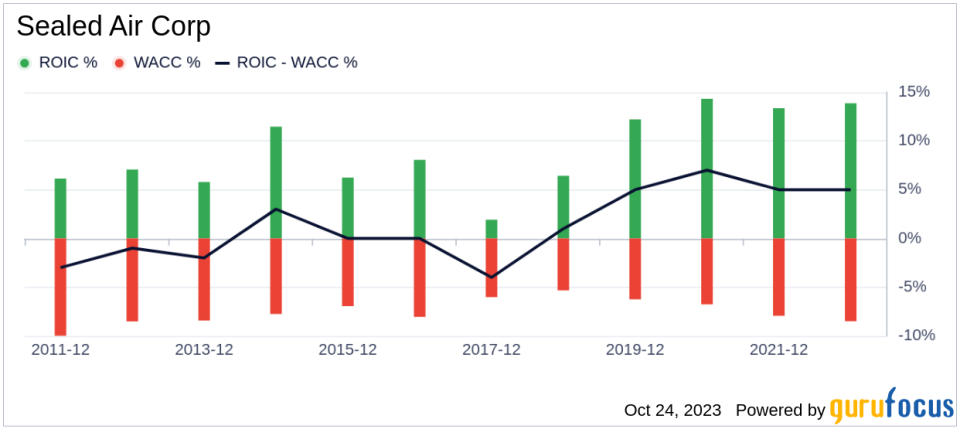Sealed Air (SEE): A Hidden Gem or a Mirage? Unveiling Its True Market Value
Sealed Air Corp (NYSE:SEE) recently experienced a daily gain of 6.02%, despite a 3-month loss of 37.44%. The company's Earnings Per Share (EPS) stands at 2.68. This prompts the question: Is Sealed Air significantly undervalued? In this article, we will conduct a valuation analysis to answer that question, providing insights into the company's intrinsic value.
Company Overview
Sealed Air Corp (NYSE:SEE) is a leading player in the packaging industry, organized into two reporting segments - Food Care and Product Care. The company's offerings primarily cater to the food and industrial sectors, with a product line that includes Cryovac, Darfresh, OptiDure, Bubble Wrap, Instapak, Jiffy mailers, and shrink film packaging systems. Despite a current stock price of $30.3, the GF Value estimates Sealed Air's fair value at $55.54, suggesting that the stock could be significantly undervalued.
Understanding GF Value
The GF Value is a unique measure of a stock's intrinsic value, derived from historical trading multiples, a GuruFocus adjustment factor based on past performance and growth, and future business performance estimates. If the stock price is significantly above the GF Value Line, it is overvalued and its future return is likely to be poor. Conversely, if it is significantly below the GF Value Line, its future return will likely be higher. With a market cap of $4.40 billion and a current price of $30.3 per share, Sealed Air's stock appears to be significantly undervalued.
Given that Sealed Air is significantly undervalued, the long-term return of its stock is likely to be much higher than its business growth.
Link: These companies may deliver higher future returns at reduced risk.
Financial Strength
Investing in companies with poor financial strength carries a higher risk of permanent loss of capital. Therefore, it is important to carefully review a company's financial strength before deciding to buy its stock. Sealed Air's cash-to-debt ratio of 0.06 is worse than 84.92% of 378 companies in the Packaging & Containers industry. GuruFocus ranks the overall financial strength of Sealed Air at 4 out of 10, indicating that the company's financial strength is poor.
Profitability and Growth
It is less risky to invest in profitable companies, especially those with consistent profitability over the long term. Sealed Air has been profitable 10 over the past 10 years. Over the past twelve months, the company had a revenue of $5.50 billion and Earnings Per Share (EPS) of $2.68. Its operating margin is 15.23%, which ranks better than 90.34% of 383 companies in the Packaging & Containers industry. Overall, the profitability of Sealed Air is ranked 8 out of 10, indicating strong profitability.
One of the most important factors in the valuation of a company is growth. Long-term stock performance is closely correlated with growth. Companies that grow faster create more value for shareholders, especially if that growth is profitable. The average annual revenue growth of Sealed Air is 7.4%, which ranks better than 51.78% of 365 companies in the Packaging & Containers industry. The 3-year average EBITDA growth is 17.4%, which ranks better than 74.29% of 350 companies in the Packaging & Containers industry.
Evaluating Profitability: ROIC vs. WACC
One can also evaluate a company's profitability by comparing its return on invested capital (ROIC) to its weighted average cost of capital (WACC). Return on invested capital (ROIC) measures how well a company generates cash flow relative to the capital it has invested in its business. The weighted average cost of capital (WACC) is the rate that a company is expected to pay on average to all its security holders to finance its assets. If the return on invested capital exceeds the weighted average cost of capital, the company is likely creating value for its shareholders. During the past 12 months, Sealed Air's ROIC is 10.03 while its WACC came in at 7.77.
Conclusion
Sealed Air's stock is estimated to be significantly undervalued. The company's financial condition is poor, but its profitability is strong. Its growth ranks better than 74.29% of 350 companies in the Packaging & Containers industry. To learn more about Sealed Air stock, you can check out its 30-Year Financials here.
To find out the high-quality companies that may deliver above-average returns, please check out the GuruFocus High Quality Low Capex Screener.
This article, generated by GuruFocus, is designed to provide general insights and is not tailored financial advice. Our commentary is rooted in historical data and analyst projections, utilizing an impartial methodology, and is not intended to serve as specific investment guidance. It does not formulate a recommendation to purchase or divest any stock and does not consider individual investment objectives or financial circumstances. Our objective is to deliver long-term, fundamental data-driven analysis. Be aware that our analysis might not incorporate the most recent, price-sensitive company announcements or qualitative information. GuruFocus holds no position in the stocks mentioned herein.
This article first appeared on GuruFocus.




